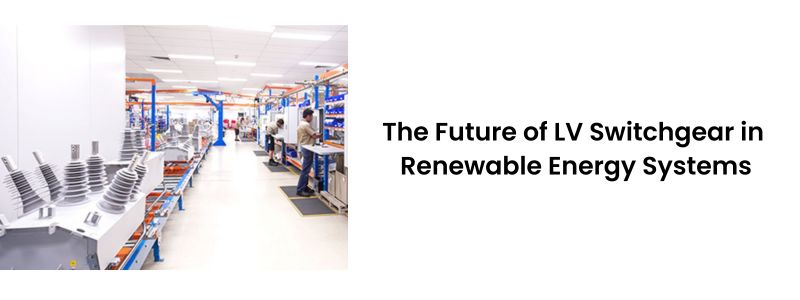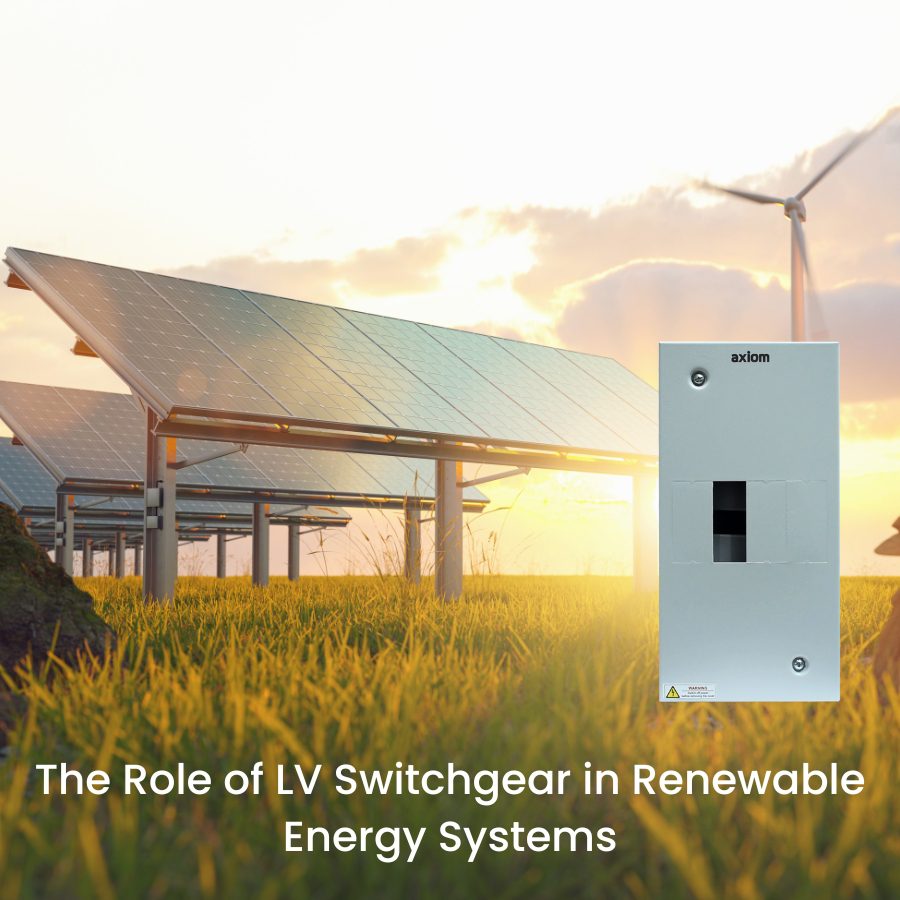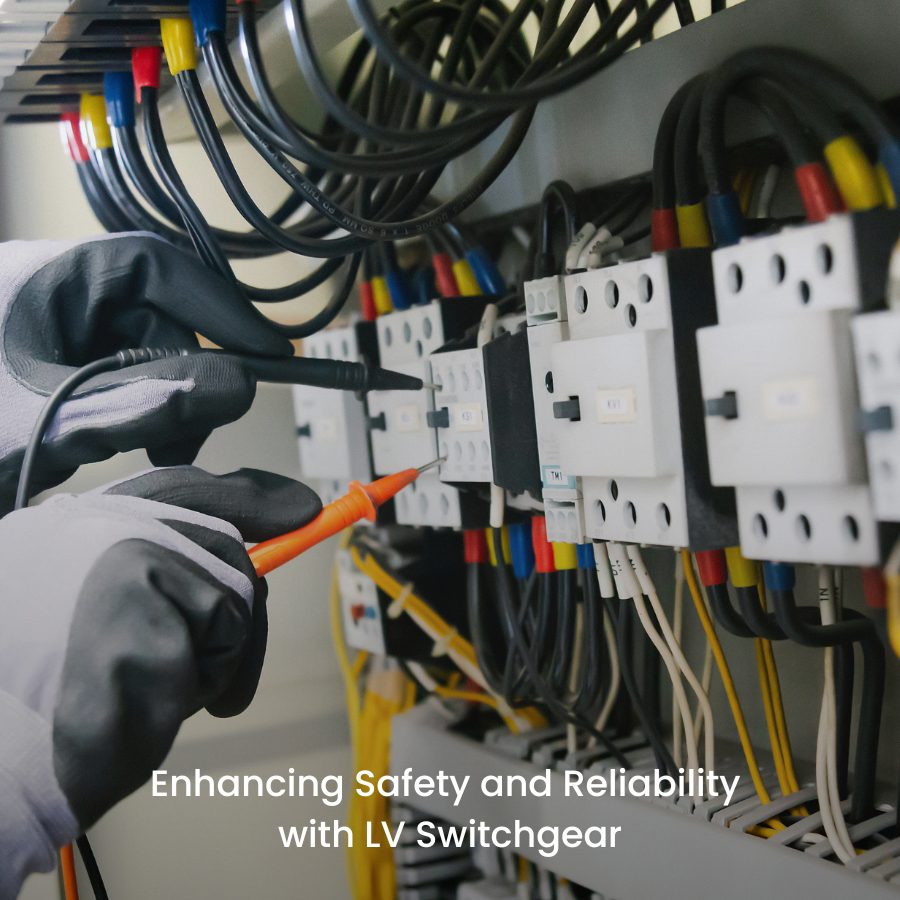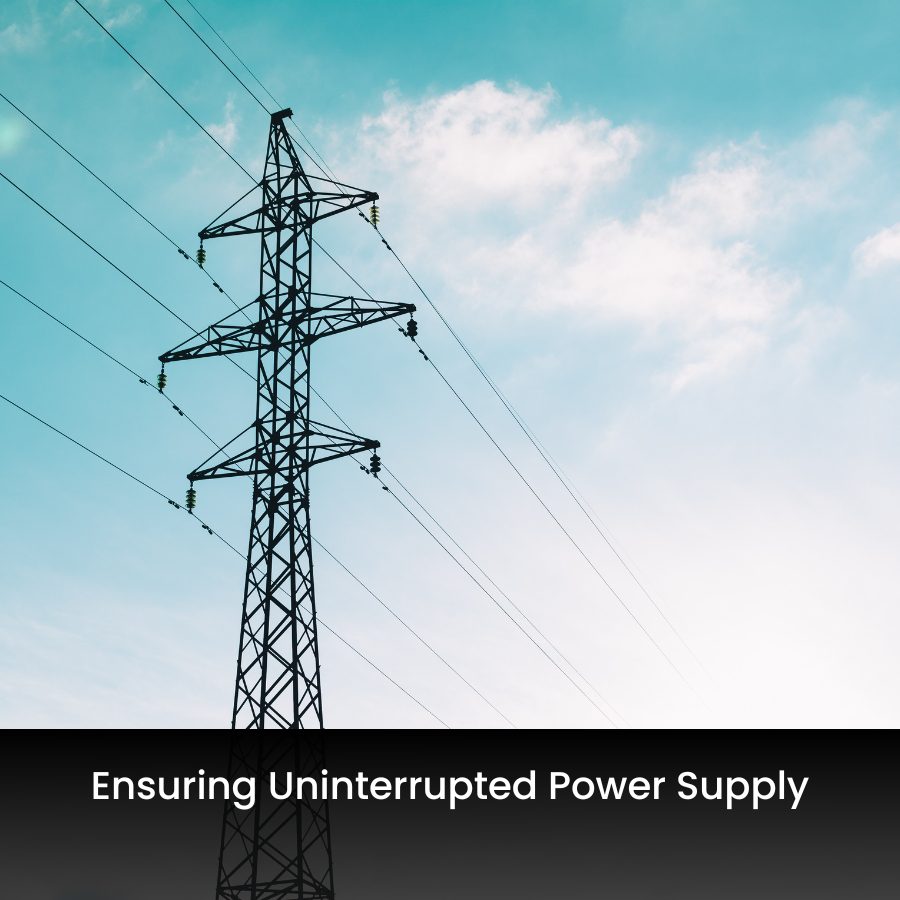
Low-voltage (LV) switchgear is an essential component of modern energy systems. It is a centralized system that controls power flow, protects circuits, and isolates electrical equipment operating at voltages up to 1000V. With the increasing demand for efficient power distribution and improved safety, the importance of LV switchgear has grown.
Why Low-Voltage Switchgear Matters
Here are some key reasons why LV switchgear is significant:
- Integration of Renewable Energy: The transition to renewable energy sources like solar and wind power requires dependable systems to manage variable generation.
- Facilitating Transition: LV switchgear allows for smooth integration of renewable systems into existing electrical infrastructures, maintaining stability during times of low generation.
Understanding the significance of low voltage switchgear is crucial as the global energy landscape changes. It will help us fully utilize renewable energy systems.
Understanding Low Voltage Switchgear
Low voltage switchgear refers to electrical devices that operate at voltages up to 1000V, playing a crucial role in managing power distribution systems. Its primary purpose is to control, protect, and isolate electrical equipment, ensuring a safe and efficient flow of electricity.
Key Functions of Low Voltage Switchgear
- Power Distribution: It directs electrical energy from sources like transformers to various loads within the system.
- Circuit Protection: Incorporates protective devices such as circuit breakers and fuses to prevent overloads and short circuits.
- Equipment Isolation: Allows for maintenance and servicing of electrical components without disrupting the entire system.
Key Components of Low Voltage Switchgear
- Circuit Breakers: Automatically disconnect power during faults, preventing potential damage.
- Contactors: Control the supply of electricity to specific circuits based on operational requirements.
- Busbars: Conduct electricity between different segments of the switchgear while minimizing energy losses.
Understanding these elements highlights the importance of LV switchgear in modern energy systems, especially as they adapt to the increasing integration of renewable energy sources.
Types of Low Voltage Switchgear
Low voltage switchgear comes in various designs, each tailored to specific operational needs. Understanding these types is crucial for effective power distribution. Key categories include:
Modular Designs
These systems offer flexibility in configuration, allowing for easy expansion and customization. Ideal for rapidly changing energy demands, modular switchgear can be adjusted without extensive downtime.
Fixed Switchgear
This type involves a stationary setup, where components are permanently installed in a designated location. Fixed switchgear is robust and reliable, making it suitable for stable environments with predictable load requirements.
Withdrawable Switchgear
This design allows for components to be easily removed or replaced during maintenance. Withdrawable switchgear promotes safety by enabling work on de-energized equipment while maintaining service continuity.
Selecting the appropriate type of LV switchgear significantly impacts system efficiency and adaptability, particularly as the energy landscape evolves.

The Role of LV Switchgear in Renewable Energy Systems
Low voltage switchgear (LV switchgear) plays a crucial role in the integration of renewable energy sources such as solar power and wind power. Its significance lies in several key areas:
Integration of Renewable Sources
LV switchgear facilitates the connection of solar panels and wind turbines to existing electrical grids. This integration ensures that generated energy can be efficiently utilized and distributed.
Managing Power Flow
With the variable nature of renewable energy generation, effective power flow management is essential. LV switchgear enables real-time monitoring and control of electrical systems, ensuring that energy supply aligns with demand.
Ensuring Reliability
Reliability in energy supply is paramount for both consumers and providers. LV switchgear enhances system reliability through advanced protection mechanisms, preventing issues such as overloads or faults that could disrupt service.
These features demonstrate how LV switchgear supports a stable and resilient grid capable of accommodating the growing demand for renewable energy integration. By harnessing the capabilities of LV switchgear, utilities can better manage fluctuating energy outputs from solar and wind sources, paving the way for a sustainable energy future.

Enhancing Safety and Reliability with LV Switchgear
Low voltage (LV) switchgear is crucial for improving safety in power distribution systems. It achieves this through advanced circuit protection mechanisms designed to prevent damage to electrical equipment and ensure personnel safety. Here are some key features:
Circuit Breakers
These devices automatically interrupt the flow of electricity during fault conditions, preventing potential hazards.
Fuses
Fuses provide a simple yet effective means of protecting circuits from overloads by melting under excessive current.
Overload Prevention
LV switchgear can detect abnormal current levels, activating protective devices to shut down systems before damage occurs. This capability is vital for maintaining system integrity, especially in environments where renewable energy sources can lead to variable loads.
Real-Time Fault Detection Capabilities
Modern LV switchgear includes intelligent electronic devices (IEDs) that continuously monitor electrical parameters. This allows for immediate identification of faults or irregularities, enhancing reliability and minimizing downtime.
Through these features, LV switchgear ensures a safer operational environment while enhancing the reliability of renewable energy systems.

Technological Advancements Shaping the Future of LV Switchgear
Recent innovations in LV switchgear technology are transforming the landscape of power distribution. Key advancements include:
Smart Metering
This technology allows for precise monitoring of energy consumption, facilitating real-time data analysis and improving operational efficiency.
Communication Features
Enhanced communication capabilities within LV switchgear enable seamless integration with other components in the electrical infrastructure. Devices can communicate status updates, alerts, and performance metrics, leading to improved decision-making.
The impact of digital technologies on performance is significant. By leveraging automation and advanced analytics, LV switchgear systems can optimize energy management. Predictive maintenance becomes possible, reducing downtime and maintenance costs. Additionally, these digital enhancements contribute to better integration with renewable energy sources, helping ensure a stable power supply even during fluctuations in generation. The future of LV switchgear is becoming increasingly interconnected and intelligent, paving the way for more resilient energy systems.
Modular Designs for Future Scalability in LV Switchgear Systems
The adoption of modular designs in low voltage switchgear systems offers significant advantages, particularly as energy demands evolve. Key benefits include:
- Easier Installation: Modular components simplify the assembly process, allowing for quicker deployment and reduced installation costs.
- Streamlined Maintenance: With separable units, maintenance activities become less disruptive. Technicians can replace or upgrade individual modules without affecting the entire system.
- Scalability: As energy needs grow, modular designs can be easily expanded. This flexibility is crucial for facilities that anticipate future increases in power requirements.
These features enhance the adaptability and longevity of LV switchgear systems. With a focus on meeting dynamic energy demands, modular designs represent a forward-thinking approach essential for integrating renewable energy sources effectively.

Ensuring Uninterrupted Power Supply
Low voltage (LV) switchgear plays a crucial role in integrating energy storage systems into renewable energy infrastructures. By enabling the connection between various energy sources and storage devices, LV switchgear ensures a reliable power supply during periods of low generation.
Key Functions of LV Switchgear in Energy Storage Integration
- Load Management: LV switchgear optimizes the distribution of stored energy, allowing for efficient use when renewable generation dips.
- Real-Time Monitoring: Advanced features enable real-time tracking of energy levels, ensuring that stored power is utilized effectively.
- Seamless Transition: During fluctuations in energy supply, LV switchgear facilitates smooth transitions between generation and storage, maintaining consistent service.
This integration is essential for maximizing the benefits of renewable energy, providing stability in an increasingly variable generation landscape. The adaptability of LV switchgear supports a sustainable and resilient energy future.

Sustainability and Decarbonization Efforts in LV Switchgear Design
The push for sustainability in electrical infrastructure is reshaping the design of low voltage switchgear. Key advancements include:
Innovative Materials
Manufacturers are increasingly utilizing eco-friendly materials that reduce environmental impact. These materials not only enhance durability but also promote recyclability, aligning with sustainability goals.
Energy Efficiency
Modern LV switchgear designs focus on minimizing energy losses during operation. Enhanced efficiency contributes significantly to reducing overall energy consumption.
Decarbonization Contributions
By facilitating the integration of renewable energy sources and enhancing grid stability, LV switchgear plays a pivotal role in decreasing reliance on fossil fuels. This transition is vital for achieving global decarbonization targets.
Investing in sustainable LV switchgear solutions fosters a cleaner energy future while addressing the growing demands of modern power systems. The evolution of these technologies underscores their importance in meeting both regulatory requirements and environmental standards.
The Future Outlook for LV Switchgear in Renewable Energy Systems
The future outlook for LV switchgear is promising as it adapts to the demands of renewable energy systems. Here are some key aspects to consider:
Evolving Role
LV switchgear is becoming a crucial component in managing distributed energy resources, ensuring smooth integration of solar and wind power.
Predictions for Developments
Here are some predictions for the future developments of LV switchgear:
- Increased adoption of smart technologies will enhance monitoring and control capabilities.
- Greater focus on modular designs will facilitate scalable solutions tailored to specific energy needs.
- Enhanced integration with energy storage systems will ensure consistent power supply during variable generation periods.
By anticipating these trends, LV switchgear will not only support but also lead advancements in sustainable energy practices, contributing to a more resilient and eco-friendly electrical infrastructure. Embracing innovation will define its trajectory in the evolving landscape of renewable energy.









